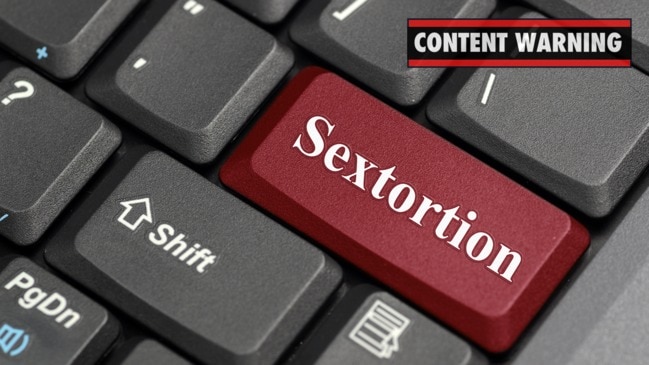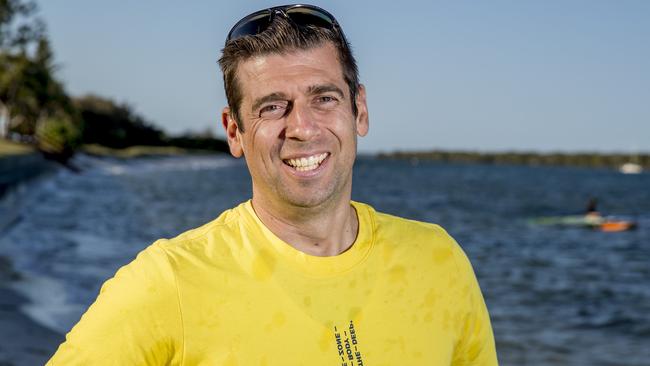Sexts and porn rife in South Aussie schools
Children as young as seven are asking classmates for ‘naked selfies’ in SA schools, while high school students are developing porn addiction. Find out how our schools are tackling the issue.

SA News
Don't miss out on the headlines from SA News. Followed categories will be added to My News.
- The SA School Hub: How does your school fare?
- How to get the most from your Advertiser digital subscription
Pornography is “rife” in South Australian high schools, with shocking claims most students have seen explicit images or videos by Year 7.
Schools are seeing high school students who have developed ‘porn addiction’ and children as young as seven asking classmates for naked ‘selfies’.
Sexting is also so common, every SA public school teaches students about it in a mandated curriculum that begins in Year 3.
Catholic, independent and government schools have taken steps to tackle the issue.
But Tyndale Christian School counsellor Gerald Pilon is calling on the federal government to step in and ban access to porn sites for children under age 18. He has revealed the extent of the problem – and its dire consequences – in a submission to a parliamentary inquiry into whether age verification should be introduced for online porn sites.
“In a meeting with 140 Year 6 children, age 11, 90 per cent said they had viewed pornography,” Mr Pilon wrote.
“I have worked with children as young as seven who have asked for naked selfies of other students.”

He has raised concerns about changes in “aggressive sexual behaviour” by boys towards girls as their expectations were “warped by viewing porn” and “the amount of young children presenting with ‘porn addiction”.
“I have worked with boys who cannot do assignments as, when they sit at their computers, they cannot resist the temptation to look at porn and thus fail,” Mr Pilon wrote. “Parents try filters and different measures but even 11-year-olds know how to get around these.”
In a call backed by his school, the counsellor has urged the government to force internet companies to put an opt-in clause on porn sites for anyone over age 18, effectively preventing minors from accessing them.
Parenting expert Dr Justin Coulson said explicit material was “one of the most significant social challenges” young Australians faced, with research suggesting they were first exposed to it on average at about age 11.
“That means 50 per cent are seeing it before then and 50 per cent are seeing it after then,” he said. “Some parents will be shocked to know that this is an issue in primary school but it’s absolutely rife in high school and absolutely devastating in terms of the way it impacts on these kids.”

Dr Coulson said research had found viewing explicit material impacted young people’s views of sex and sexuality, and their ability to have healthy relationships. Some research found a link between depression and porn consumption, while there was also evidence of more young people presenting with injuries related to sex.
Tyndale Christian School head Michael Potter said the school ran a “fairly frank” sex education program from Year 5 to Year 12, which covered issues such as pornography from Year 9.
“We’re finding more and more that … maybe we need to be starting it earlier because of the impact that access to pornography is having,” he said.
Australia’s eSafety Commissioner Julie Inman Grant said the Commission was monitoring the development of online age-verification technology but it was not “a silver bullet”. The “first and best firewall” between kids and online harm was parents and carers, she said.
An Education Department spokeswoman said the department did not collect data about children’s exposure to pornography but it was “important to be cautious about anecdotal accounts” about how widespread it was.
HOW SCHOOLS ARE TACKLING THE ISSUE
PUBLIC
All SA public schools use the Keeping Safe: Child Protection Curriculum, which was launched in 2008 and updated in 2014 and 2017 to include “new terminology, updated research and changes to the law”.
It includes content about keeping safe from exposure to pornography, sexting, sharing personal information and images, and online safety and the law.
Curriculum documents show that includes teaching students about the dangers of ‘the sending of rude pictures using the internet or a mobile phone’ from Years 3 to 5.
An Education Department spokeswoman said: “The Years 3-5 document provides age appropriate content which focuses on students’ understanding of the appropriateness of photographs and digital images and what they can do to keep safe or if they accidentally access inappropriate images.”
INDEPENDENT
Association of Independent Schools of SA chief executive Carolyn Grantskalns said there were programs available for schools to address the issue
CATHOLIC
Catholic Education SA assistant director Bruno Vieceli said the sector developed new policies in 2018 to “counter the potential for harm from pornography”, in collaboration with nine secondary schools and expert Maree Crabbe.
It has led to the recent redevelopment of the sector’s human sexuality education curriculum for both primary and secondary students.
The issue of pornography is addressed “at appropriate stages” in the curriculum and is complemented by the Keeping Safe Child Protection Curriculum.
